Wing Khwai: Thailand’s Buffalo Racing Festival
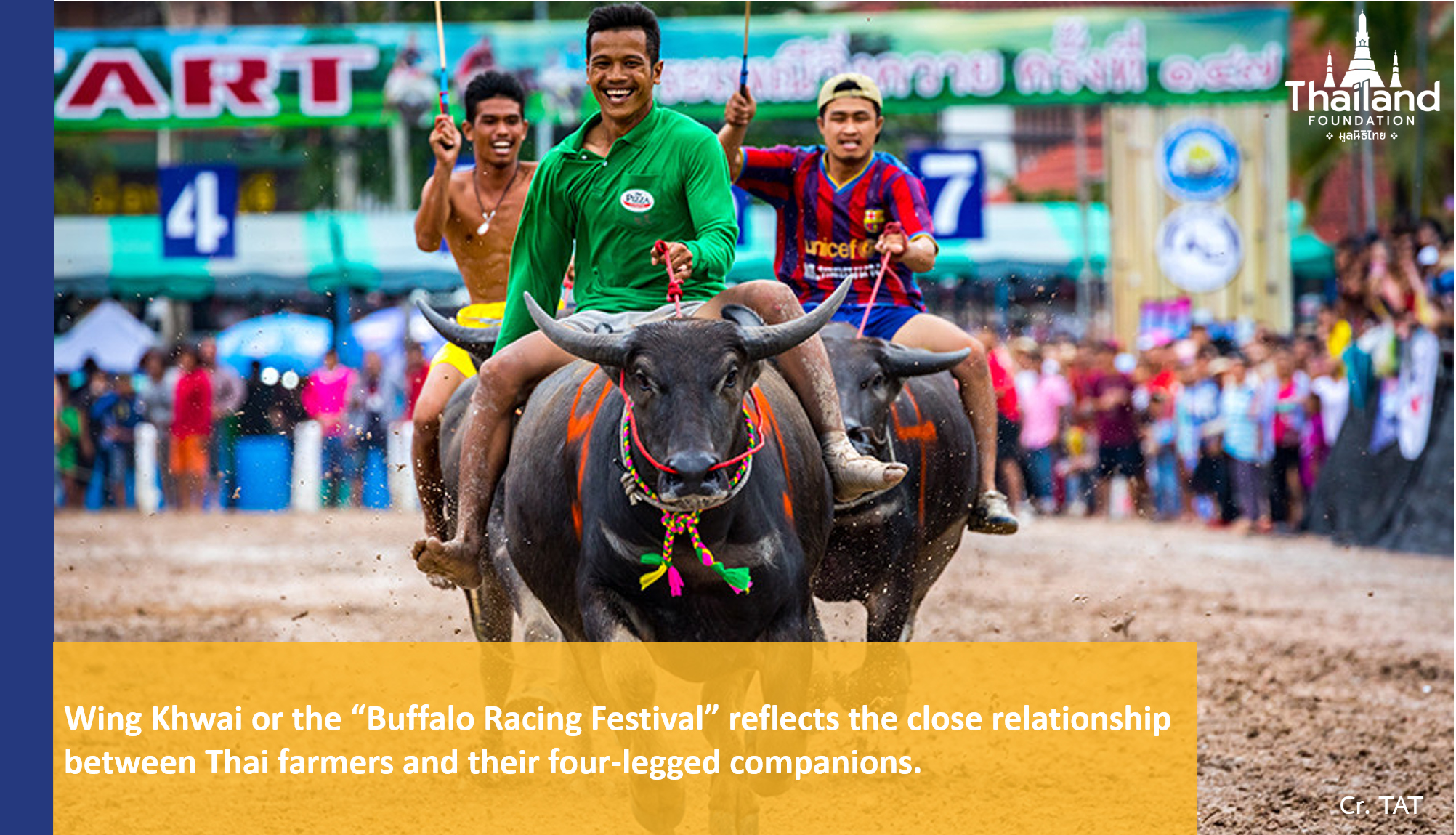
Thailand is one of the world’s largest producers of rice, with Thai farmers acting as an important backbone of the country. In the past, water buffalos played a critical role in rice cultivation as Thai farmers used them to plough rice fields. Due to their close relationship with farmers, water buffaloes are considered to be an iconic symbol for Thailand’s agriculture and rural life. These animals are also regarded as a cultural symbol of Thailand.
One Thai tradition that has drawn widespread attention from all over the world is the Buffalo Racing Festival or Wing Khai (วิ่งควาย). The festival not only honors the role of buffaloes but also serves to celebrate the agricultural heritage of Thailand. The event offers an opportunity for communities to come together and engage in a shared cultural experience. It is through this sense of unity and festivity that the Buffalo Racing Festival helps strengthen bonds between people and nurture a strong and thriving community.
What is the Buffalo Racing Festival?
The Buffalo Racing Festival is held annually at the end of Buddhist Lent in Chonburi Province. The festival has been a cherished practice for over 140 years. Legend has it that Thai farmers from the countryside descended onto Chonburi city to trade their agricultural products and the event originated to settle an argument over who has the fastest buffalo in town. Over time, this has evolved into a beloved tradition celebrated by various communities across the country. The main purpose of this event is to express gratitude to buffaloes for their hard work helping farmers throughout the year. Some locals believe that the festival has the power to bless and ward off diseases from the buffaloes in their communities. The event typically occurs in October, attracting both locals and foreigners to witness this captivating spectacle.
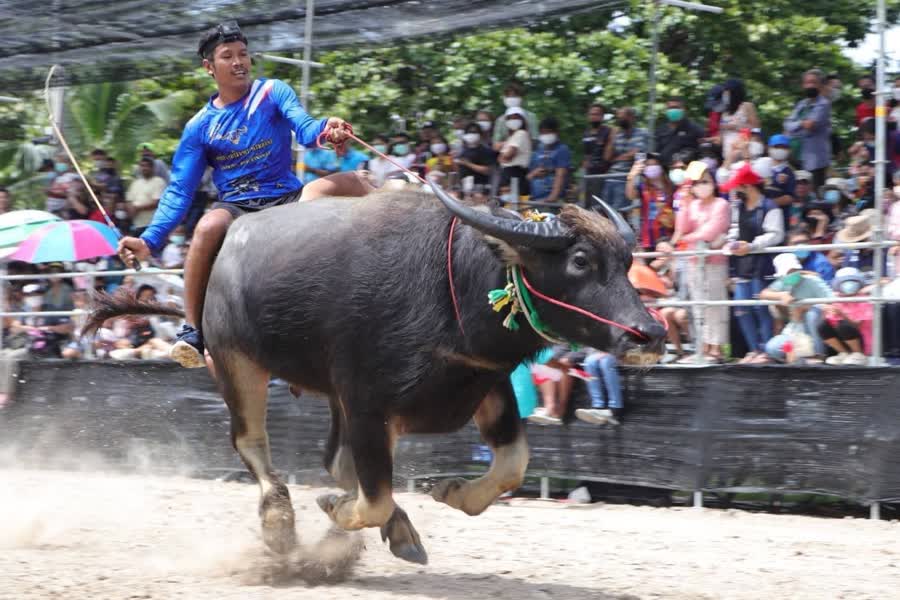
cr. National News Bureau of Thailand
Every year, farmers from all over Chonburi province gather together and bring their buffalos with them to participate in this annual competition. The event attracts thousands of Thai visitors to Chonburi and its proximity to Pattaya and Bangkok ensures a strong expat presence. Local officials said that the two-week long buffalo racing festival helps bring great income to the local economy. There are also buffaloes pageants held in congruent with the race. The pageants include “most healthy buffalo” and “best dressed buffalo”.
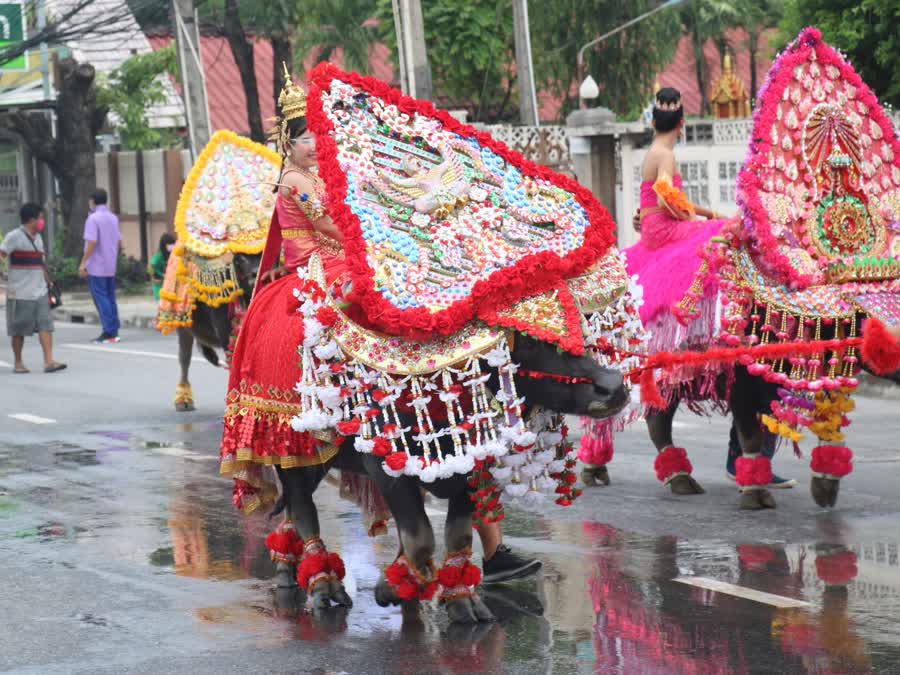
cr. National News Bureau of Thailand
There is a buffalo parade held at Wat Yai Intharam (วัดใหญ่อินทาราม) where Buddhist monks perform a religious ceremony before the start of the race to bless the community and the buffaloes. After the parade, the race is commenced. The racecourse is around 100 meters long, located right in front of Chonburi city hall. The races are split into three categories based on the size of the buffaloes: small, medium, and large. Buffalo races are highly competitive, with the animals being carefully selected for this unique event. Buffaloes used in the races undergo rigorous conditioning and training that focuses on their speed, endurance and strength. They are also often dressed up with colorful garments and accessories. Farmers take great pride in their animals, dedicating months of preparation and care to ensure they are ready for the race. Thai buffaloes are often stereotyped as slow lumbering beasts; however, many visitors are surprised at how fast they can run.
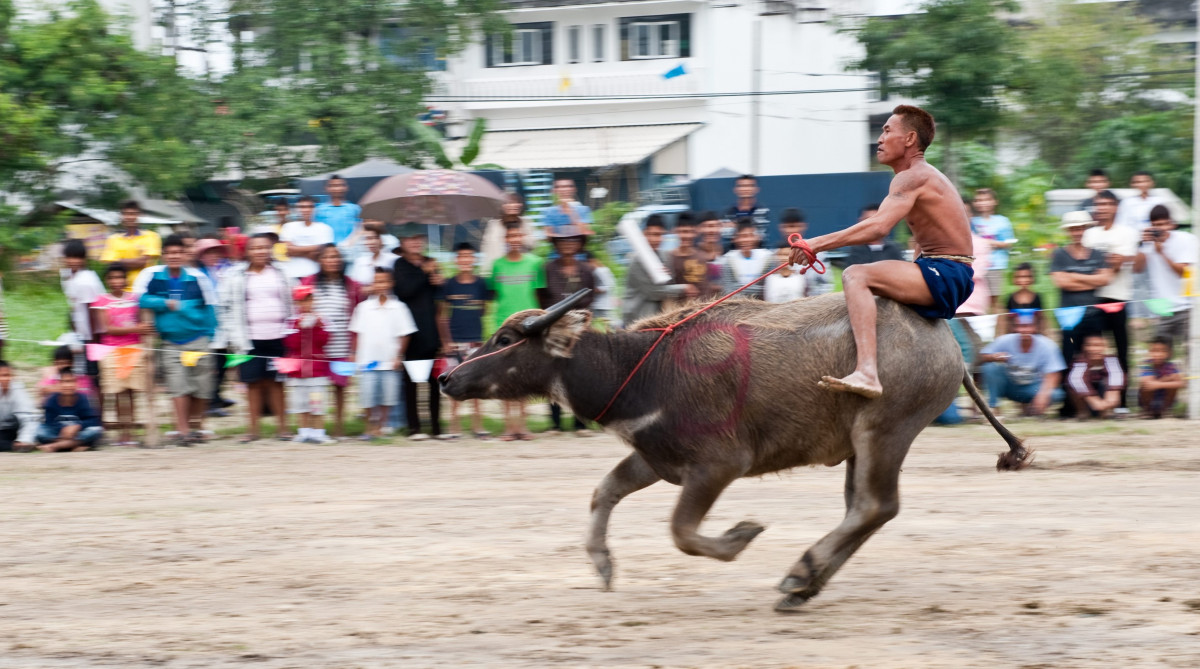
cr. Tourism Authority of Thailand
Buffalo and Man
Relationships between Thai farmers and buffaloes have been going on for centuries. In rural areas of Thailand, buffaloes have traditionally been highly valued for their role in farming and agriculture. They are mainly employed to plow fields in preparation for rice cultivation. Water buffaloes can also be used to manage uncontrolled growth of vegetation in natural wetlands. By grazing, they can help open up closed swamp areas and extend habitats for wetland birds and other wildlife. As essential work animals, they contribute to the livelihood of farmers and entire communities. It should come to no surprise that Thai people have formed a strong connection with their buffaloes. Traditions such as the Buffalo Racing Festival serve as a recognition and appreciation of this connection. Furthermore, water buffaloes have a sacred significance as symbolic auspicious animals. Like the albino elephant, albino water buffalo is considered sacred due to its rarity and symbolic representation of purity.
In the past, almost all Thai farmers employed water buffaloes in agriculture. The deep bond that Thai people have with buffaloes can be felt in different aspects of life. For example, there have been several Thai songs that mention the relationship between farmers and buffaloes. In the old days, farmers expressed gratitude to buffaloes by making a gift to them at the end of plowing or rice-planting season. When buffaloes get very old and die, the owner would ask their neighbors to dissect the meat and give it to those who want some. Normally, the owners do not eat the meat of their own buffaloes as they have formed a connection to the animals that had tended their fields for a long time. But they would keep the skin to use as a leather thong and keep the skull with horns as a fond memory. No matter how the time passes, the owner will always remember the name of each one of them. This cycle of life is closely connected between the farmer and the buffalo. It is a natural bond so profound that it is hard to put into words.
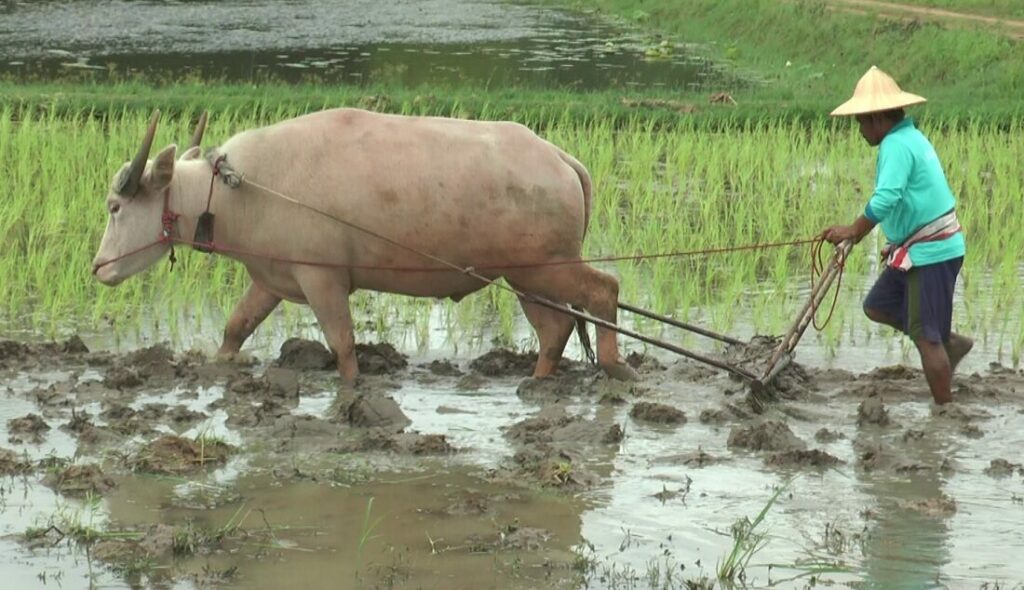
cr. True ID
With the arrival of the mechanization of farming around the 1960s, tractors have replaced water buffalos, causing their population to rapidly decline all over Thailand. For example, the number of water buffaloes in Thailand dropped from more than three million in 1996 to fewer than 1.24 million in 2011, according to the global survey on water buffalo population conducted by the United Nations. As such, many Thais have become concerned that water buffaloes may gradually disappear. The close bond between Thais and the creature they once depended on for cultivating their land is being slowly lost. Nowadays, Thai people often compare a stupid person to a buffalo because they think buffaloes are stupid animals instead of an honest and loyal animal. If a Thai person is called a “buffalo”, he or she will become angry.
However, there are efforts being made to conserve the water buffaloes. The Cattle and Buffalo Bank for Farmers Project was established under the initiatives of His Majesty King Bhumibol Adulyadej in order to collect cows and buffaloes from various donors, perform controlling records to distribute and loan buffaloes to needy farmers, and to increase the population of buffaloes for organic rice production. This project has been beneficial to low-income farmers, helping them live in harmony with nature and restoring the endangered species of buffaloes from vanishing. Another exceptional example of conserving water buffaloes involves the promotion of buffalo training schools in Sa Kaeo province. It is a project under the initiative of Her Royal Highness Princess Maha Chakri Sirindhorn. The construction of Thai buffalo training facilities is a source of career creation for farmers and helps create a sustainable relationship with foreign tourists.
Conclusion
Buffaloes and human beings were bound together in the ancient times. In particular, Thai people’s lifestyle in the past depended on buffalo labor for agriculture. Cultural traditions developed from this connection between man and beast. With the rise of modern technology, the significant and enormous value of buffaloes are unfortunately becoming lost to time. However, efforts are being made to conserve Thai buffaloes and remind the new generations of the relationship between Thai people and their buffaloes. The Buffalo Racing Festival can be seen as a tradition from ancient times that is still practiced to keep the memories of the relationship between people and buffaloes alive.
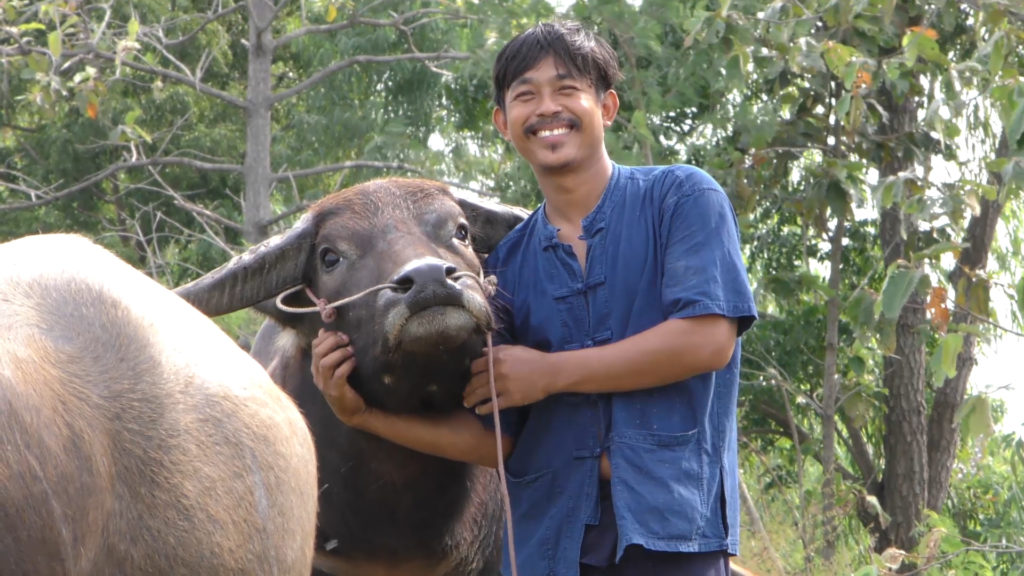
cr. Matichon
The story of the “Buffalo Racing Festival” is a fascinating snippet of Thai culture and heritage. This energetic festivity reflects the deep bond of love and respect between Thai farmers and their buffaloes. Join us in exploring more stories of Thailand and the Thai people, as we take you on a journey to discover Thainess.
Sources
- Tumwasorn, S. 1979. Buffalo production. Department of Animal Science, Kasetsart University.
- Faarungsang, S. 1979. Buffalo feed. Buffalo bulletin. Department of Animal Science, Kasetsart University. Voranvan, C. 1984.
- Dairy Production. Thai Wattana Panich Publ., pp. 365. Chakriyrat, S. 2002.
- Artificial Insemination of Cattle and Buffaloes. Kasetsart University Publ., pp. 439.
- Division for Sustainable Development Goals. (n.d.). Sustainable Development Knowledge Platform. Retrieved from https://sustainabledevelopment.un.org/.
- Research article/January-June 2012/Water Buffaloes: A changing of life cycle amidst social changes.
- The Golden Jubilee of His Majesty. (1982). Illustrated Handbook of Projects Undertaken through Royal Initiative. Thailand: The Office of His Majesty’s Principal Private Secretary.
Author: Vanthop Nilubol
Editor: Tayud Mongkolrat
27 October 2023


